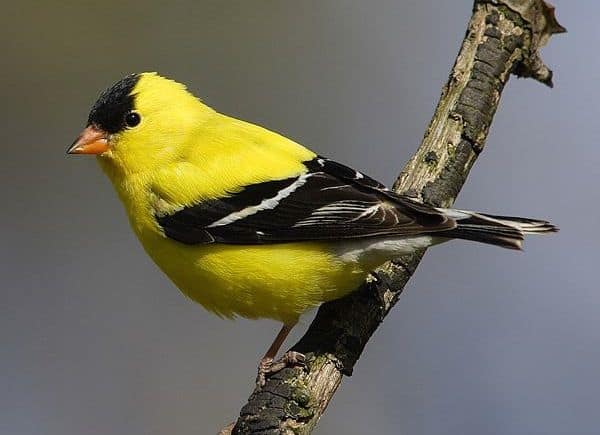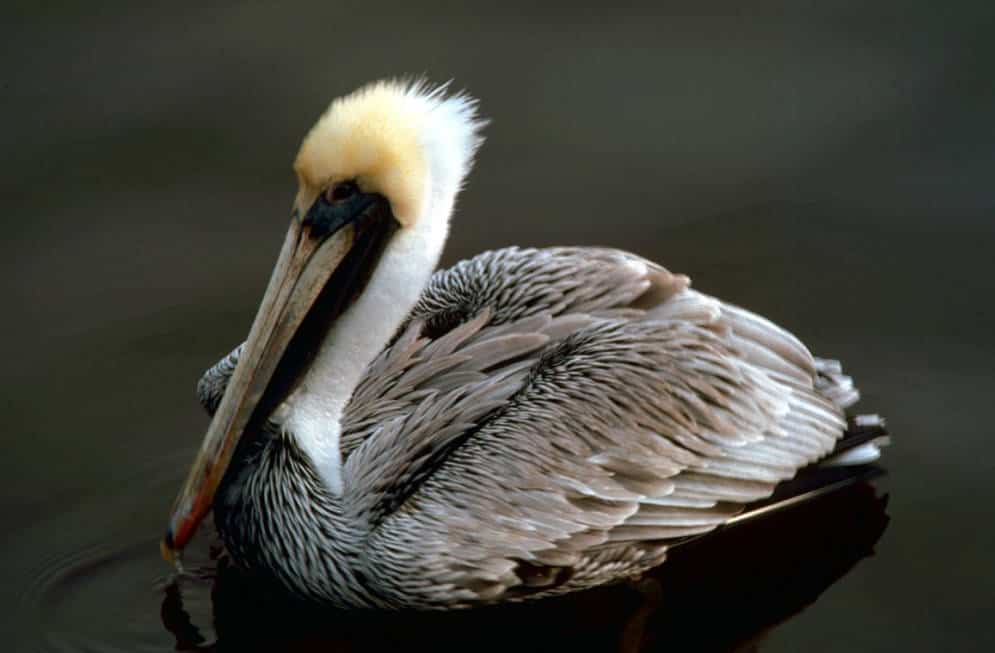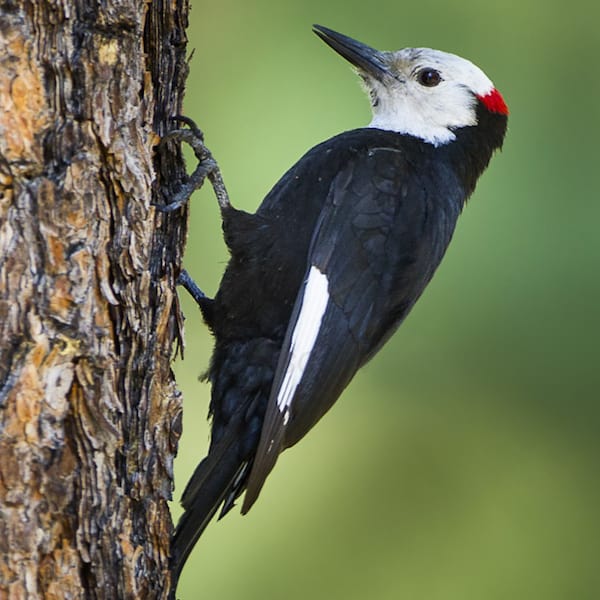Look For
The bright canary-yellow and black plumage of the breeding male American goldfinch has earned this species the nickname “wild canary.” American goldfinches appear very different in summer and winter. The male’s brilliant yellow body and black cap in summer give way to a drab, olive-brown plumage in winter.
Female goldfinches, though never bright yellow, also lose most of their color. Both sexes retain their black wings and tail year-round. The sweet, high-pitched, warbling song of the male is often given in early spring, just as these small (5 inches long) birds are beginning to show their first bright yellow feathers.
Listen for
The goldfinch’s undulating flight is accompanied by a twittering call of perchickoree or potato chip!
Find it
It is a familiar visitor to bird feeders at all seasons, especially in winter. Weedy fields, brushy woodland edges, and open habitats with scattered shrubs are the American goldfinch’s normal habitats. In the breeding season, they prefer weedy fields with thistles and other seed-producing plants. In winter, gold-finches roam in noisy flocks, seeking food in fields, gardens, and at feeding stations.
Feed it
Goldfinches are seedeaters in all seasons, consuming a huge variety of weed, grass, and plant seeds as well as tree buds. In goldfinch nests parasitized by brown-headed cowbirds, young cowbirds are unable to survive the all-seed diet fed to nestling goldfinches. Goldfinches are agile birds, able to exploit seed sources that other finches cannot, by hanging upside down from seedheads, plant stalks, and bird feeders.
Nesting Behavior
Goldfinches’ nesting season begins late, an adaptation to time so that nesting occurs when there is the greatest natural abundance of seeds, as well as the soft thistle down that goldfinches use to line their nests. Late June is the earliest nesting time, but peak nesting season is late July, though some nesting occurs as late as September.
The site is in a shaded spot in a sapling or shrub and is selected by the pair. The female builds the open cup nest from twigs (attached with spider web), rootlets, and plant stems, and she lines it with soft thistle down or a similarly soft material. Four to six eggs are incubated by the female for about two weeks, with the male bringing food to her on the nest. Both parents tend the nestlings for 12 to 17 days before they fledge.
WOW!
The American Goldfinch is the only songbird that feeds its young a diet of seeds. Brown-headed Cowbirds hatched from eggs laid in goldfinch nests cannot survive the all-seed diet.





Just saw a pair on our small balcony. What a treat! We only have hummingbird feeder so don’t know what attracted them here. Perhaps some of our plants. A beautiful sight to be sure.
Mine love the hummingbird feeder….so they may be feeding on your nectar.
I’ve had as many as 4 pairs at my feeders over the last two weeks. I love these beauties!